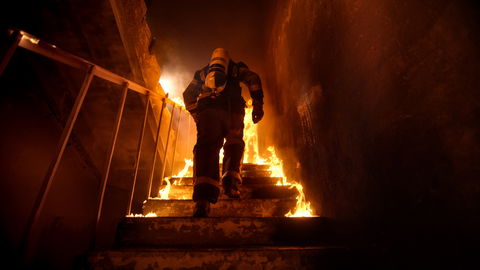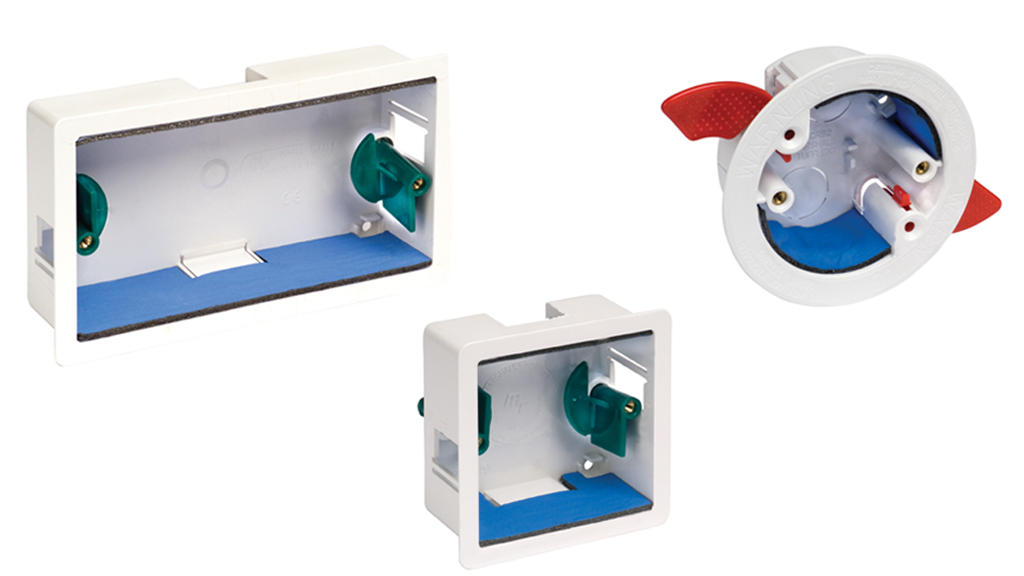Terry Adams, Technical Manager at Marshall-Tufflex, explores key cable management specification factors to keep cables secure in the event of a fire.

In the event of a fire - whether electrical in origin or not - it is essential that building occupants can evacuate safely and that emergency services can operate without obstruction. To support this, legal requirements are in place to ensure the integrity of cable installations under fire conditions.
Fire-Safe Cable Support
Under BS 7671:2018, Regulation 521.10.202 states that wiring systems must be adequately supported throughout the installation to prevent premature collapse during a fire. To meet this requirement, manufacturers have developed fire-resistant clips and fixings that hold cables securely in place, even when exposed to extreme temperatures.
One example is the Marshall-Tufflex Firefly range, which offers fire-resistant clips capable of withstanding temperatures above 1000°C for up to 120 minutes. These clips remain intact even if plastic trunking melts, keeping cables securely fixed and reducing the risk of injury or obstruction. With a spring-loaded design, they’re not only easy to install but also allow convenient access for maintenance and future wiring changes.
Reducing Hazards Through Smart Trunking Design
Robust cable containment is also vital. Trunking systems must meet relevant safety standards to prevent tampering, damage, or hazards arising from poor storage.
For areas with high footfall—such as offices, corridors, or retail spaces—trunking with a square-edged design should be avoided. Flat surfaces often become makeshift shelves, encouraging people to rest drinks or other objects on them. This can increase the risk of spills and ultimately electrical fires.
Instead, trunking with a curved profile, such as Sterling Curve or Odyssey, is recommended. These designs discourage items being placed on top, enhance cleaning and maintenance ease, and support better fire safety in busy environments.
For added resilience, materials like aluminium or steel trunking are also available and offer enhanced temperature resistance.
MT Supertube: Flexible Yet Tough

For conduit applications, MT Supertube provides a high-performance solution. This lightweight, three-layer composite LS0H conduit is pliable by hand but offers excellent mechanical strength and electromagnetic interference (EMI) protection. Crucially, it can maintain performance at working temperatures up to 120°C during a fire, making it ideal for demanding installations.
Added Protection with Fire Barrier Pads
Socket and switch outlets can become weak points during a fire, as cover plates may distort or sag, creating pathways for flames to spread into adjacent rooms or ceiling spaces. To mitigate this, dry lining boxes fitted with Envirograf® intumescent pads can be used. These pads expand in the presence of heat to seal any gaps, forming an effective fire barrier. This solution aids compliance with BS 7671 and Approved Document B of the UK Building Regulations.
Built to Last
Marshall-Tufflex products are engineered for durability. Our PVC-U trunking systems are made using recycled window frames — material originally designed to withstand outdoor elements. As such, they deliver superior toughness for indoor cable protection, guarding against accidental damage or wear over time.
Staying Fire-Smart All Year Round
Effective cable management isn't just about tidy installations — it's a critical safety measure. Poorly secured cables, damaged systems, or inadequate fire clips can significantly increase fire risk. Investing in the right cable containment solutions can make all the difference, helping to protect property and save lives in the event of a fire.
